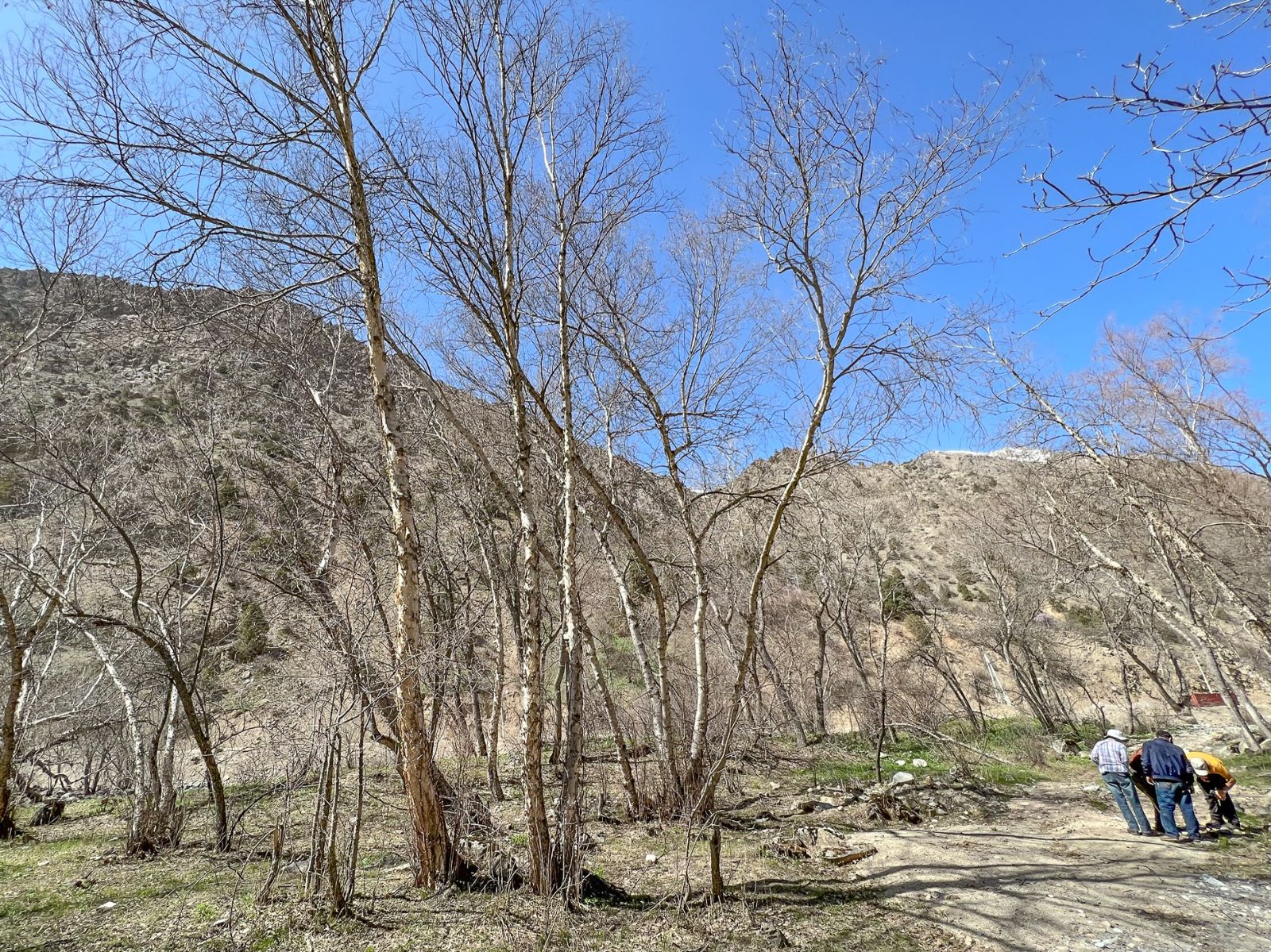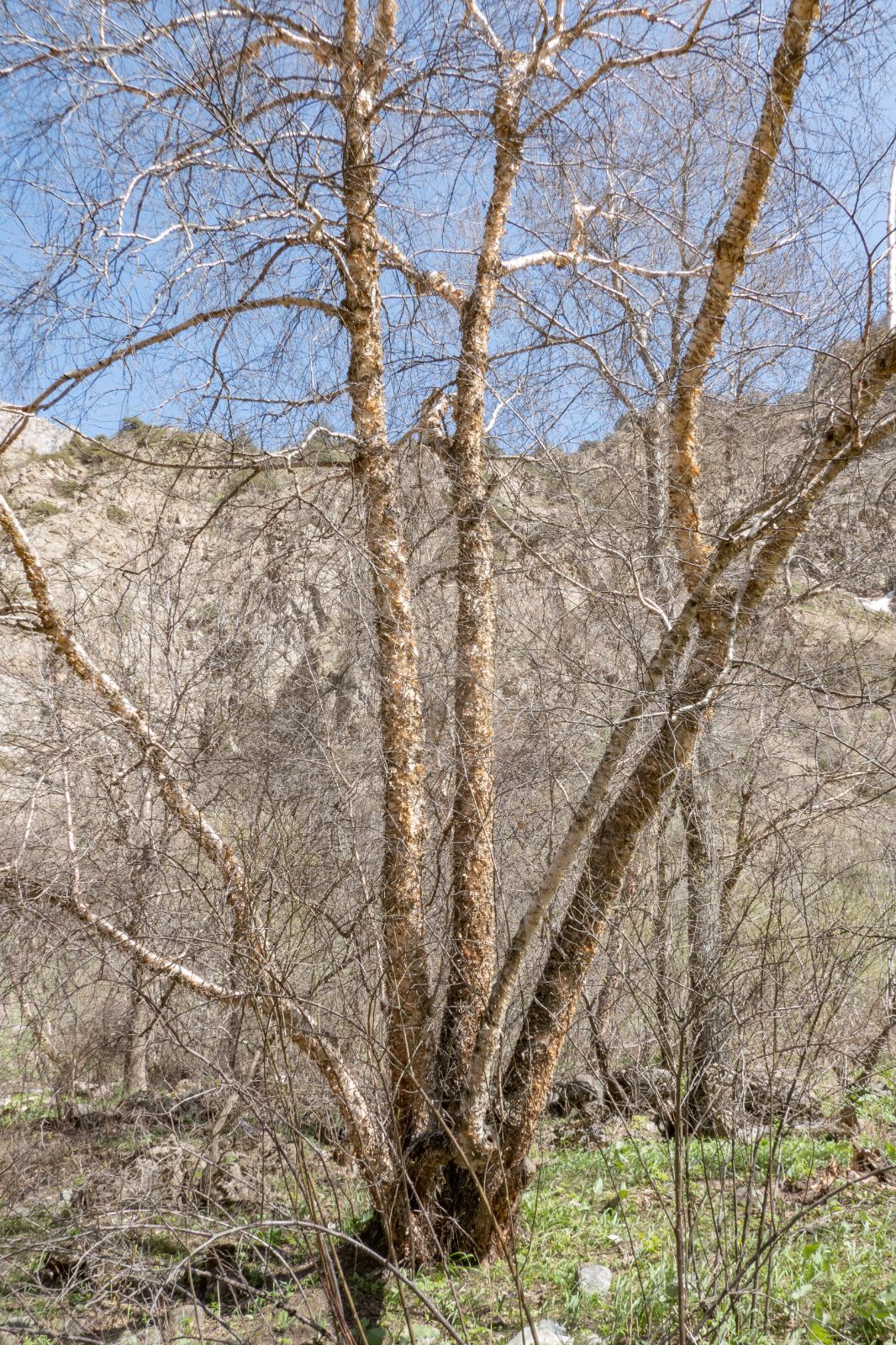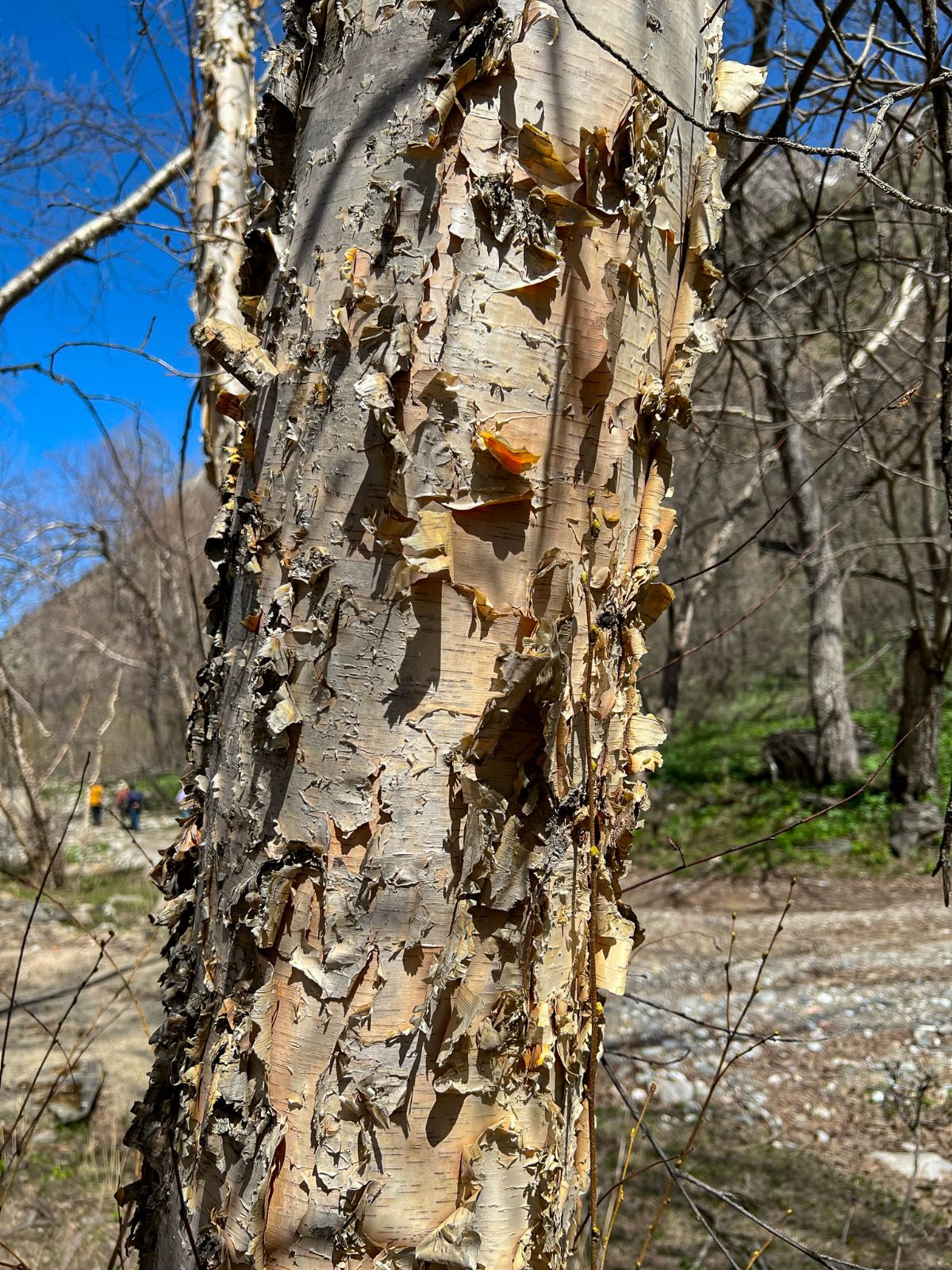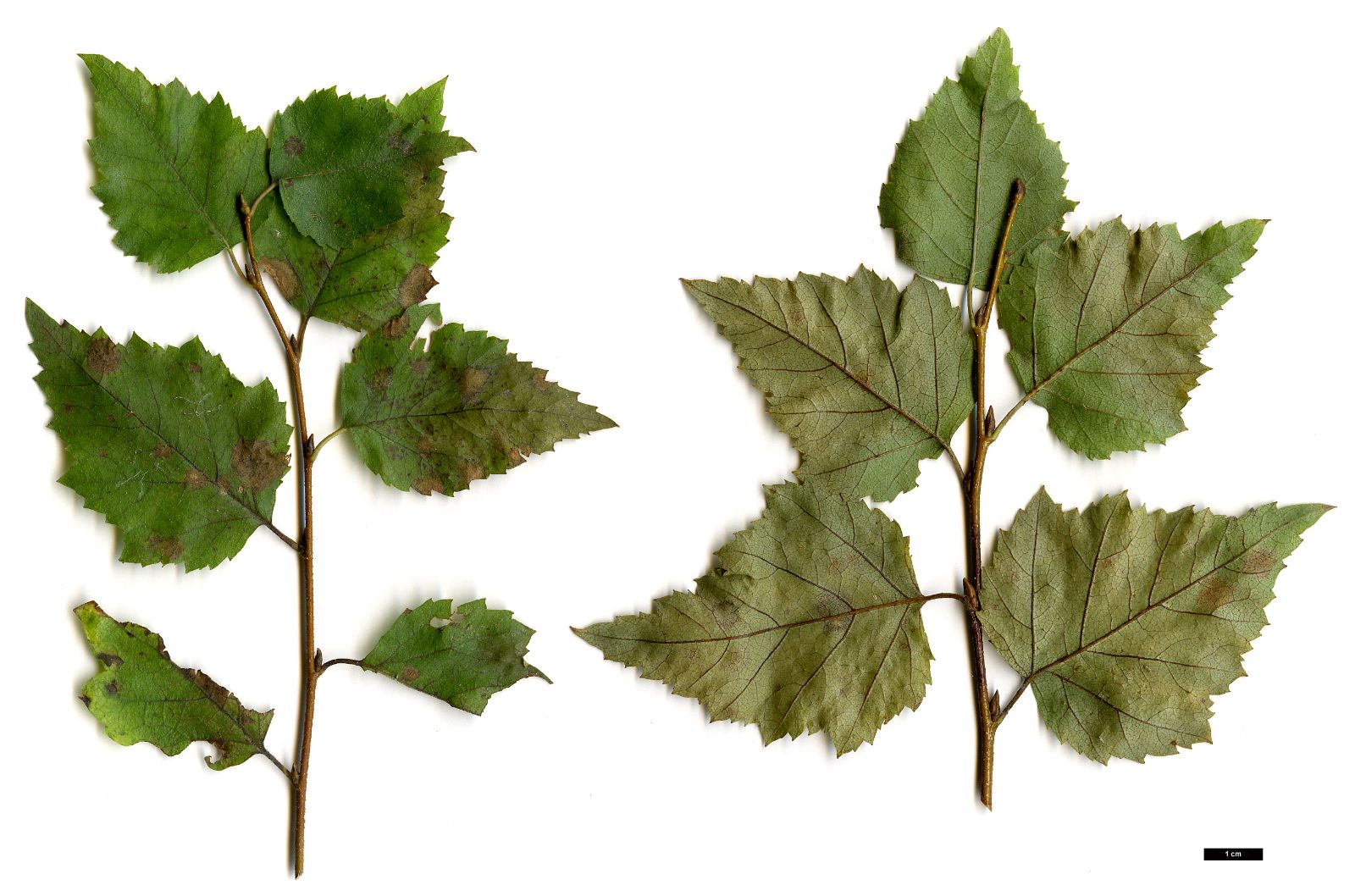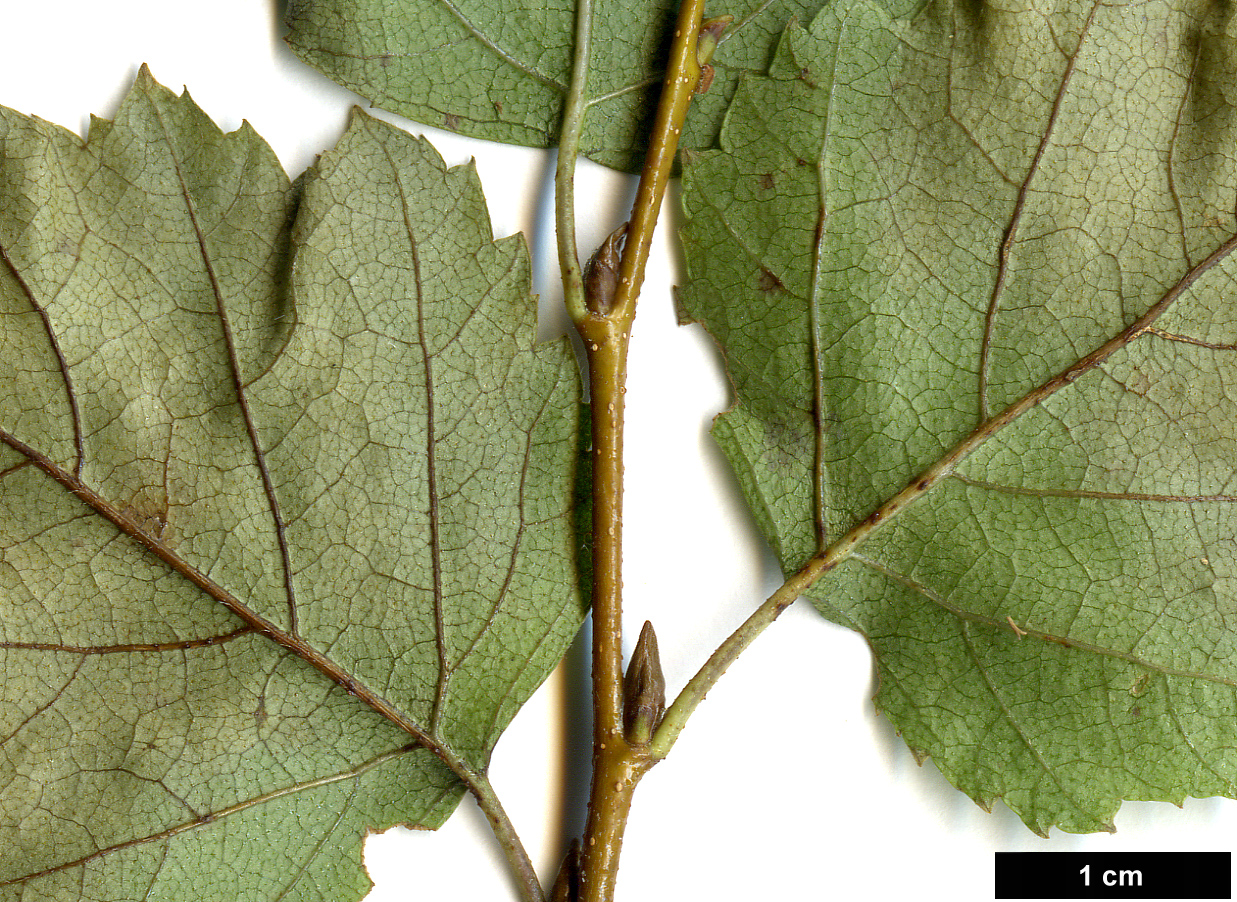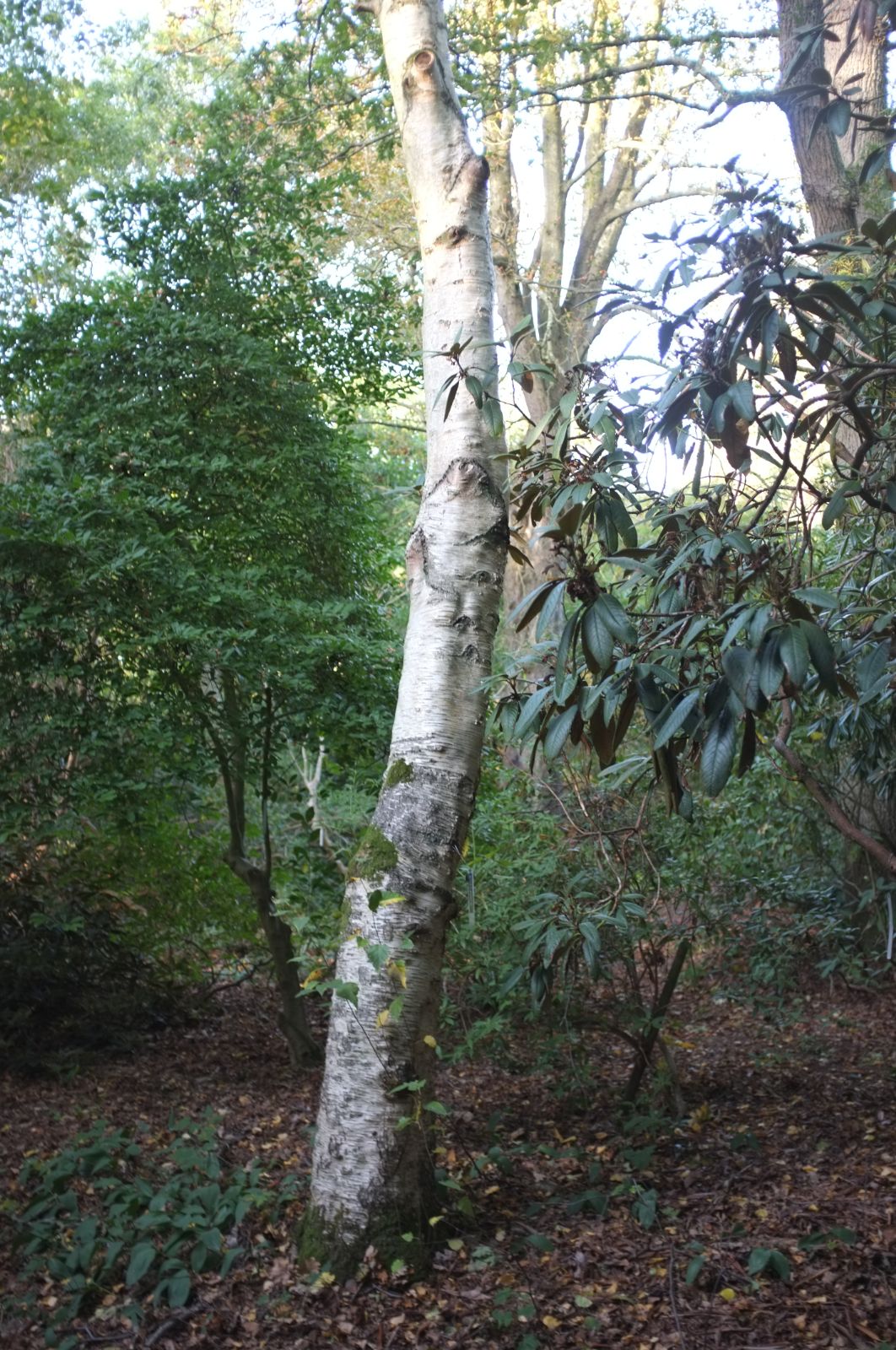Betula tianschanica
Credits
Article from Bean's Trees and Shrubs Hardy in the British Isles
Article from New Trees by John Grimshaw & Ross Bayton
Recommended citation
'Betula tianschanica' from the website Trees and Shrubs Online (treesandshrubsonline.
Genus
Other taxa in genus
- Betula albosinensis
- Betula alleghaniensis
- Betula × aurata
- Betula bomiensis
- Betula × caerulea
- Betula chichibuensis
- Betula chinensis
- Betula coerulea-grandis
- Betula cordifolia
- Betula corylifolia
- Betula cylindrostachya
- Betula davurica
- Betula delavayi
- Betula ermanii
- Betula forrestii
- Betula glandulosa
- Betula globispica
- Betula grossa
- Betula humilis
- Betula insignis
- Betula jacquemontii
- Betula lenta
- Betula luminifera
- Betula lutea
- Betula mandshurica
- Betula maximowicziana
- Betula medwediewii
- Betula nana
- Betula neoalaskana
- Betula nigra
- Betula occidentalis
- Betula papyrifera
- Betula pendula
- Betula platyphylla
- Betula populifolia
- Betula potaninii
- Betula pubescens
- Betula pumila
- Betula raddeana
- Betula schmidtii
- Betula szechuanica
- Betula × utahensis
- Betula utilis
A small tree with a creamy pink, peeling bark; twigs glabrous, glandular. Leaves of firm texture, ovate to rhombic ovate, acuminate, broad-cuneate at the base. Fruiting catkins erect, about 3⁄4 in. long and 1⁄4 in. or slightly more wide, shortly stalked; bracts slightly ciliate, the lateral lobes rounded, shorter than the narrow mid-lobe; nutlets with wings about equal to the body.
An ally of B. pendula with a wide range in the mountains of central Asia, described in 1869. It is now in cultivation from seeds brought home by John Whitehead in 1979 (The Garden (Journ. R.H.S), Vol. 106 (1981), p. 432).
From New Trees
Betula tianschanica Rupr.
Tree to 12 m. Bark yellowish brown or pinkish white, flaking. Branchlets greyish brown or dark brown, densely pubescent and with a small number of resin glands. Leaves deciduous, 2–7 × 1–6 cm, ovate to rhombic, both surfaces with sparse pubescence and resin glands when young, four to seven lateral veins on each side of the midvein, margins with coarse double serrations, teeth mucronate, apex acute or acuminate; petiole glabrous, 0.5–0.7 cm long. Monoecious; staminate inflorescences catkin-like; pistillate inflorescences catkin-like, pendulous or erect, pedunculate, oblong to cylindrical, 1–4 × 0.5–1 cm. Flowers inconspicuous; bracts pubescent, three-lobed. Fruit a tiny samara with membranous wings. Flowering June to July, fruiting July to August (China). Kuzeneva 1970, Li & Skvortsov 1999. Distribution CHINA: Xinjiang; KAZAKHSTAN; KYRGYZSTAN; TAJIKISTAN. Habitat Temperate deciduous forests, streambanks, shady valleys or rocky slopes, between 1300 and 2500 m asl. USDA Hardiness Zone 6. Conservation status Endangered, due to limited distribution and rapid decline. Illustration Li & Skvortsov 1999. Cross-reference S122.
Unlike several other taxa from the same region, this central Asian birch does seem to be distinct, although it rather resembles Betula pendula. It has been collected on several occasions (for example, by John Whitehead in 1979: Clarke 1988), but in general it does not seem to flourish in the United Kingdom (H. McAllister, pers. comm. 2007). It is grown at Wakehurst Place from seed collected by Christopher Grey-Wilson in the Tien Shan near Almaty, Kazakhstan in 1991. It grows there in small stands, the trees not getting taller than about 10 m, developing a good white trunk and turning clear yellow in autumn (C. Grey-Wilson, pers. comm. 2007). Unfortunately, although its name at least is frequently found in arboreta and catalogues across our area, it is impossible to say whether or not the trees in question are correctly identified, and any that are not from wild-origin seed should be regarded with suspicion.

